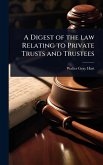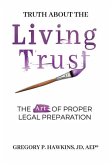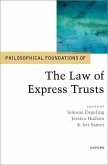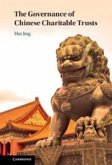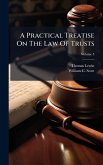If you advise high net worth investors and you have not studied the field of trusts, you are likely to find considerable value in gaining an increased understanding and appreciation of trusts, and what they can do for high net worth families. The purpose of this book is to provide readers with enough knowledge to be informed about the uses of trusts and some of the problems trusts can solve. Neither this book, nor any single book, will make you an expert. But you don't have to be an expert in trusts to benefit from using them, any more than you have to be an expert airplane mechanic to travel by air. If you need to drive a nail, a hammer is usually the best tool. But if you need to drive a screw, you'll be much better off with a screwdriver. To accomplish goals efficiently and effectively, it's usually best to use the right tool. And unless the problems are very simple, it's usually best to have the tool in the hands of an expert. This book discusses a wide range of problems for which trust tools and solutions have been developed. Among the main categories of problems for which trust tools exist are: * Taxes: Reducing, Avoiding, and Deferring * Asset Protection: Protecting Assets from Potential Creditors * Control: Managing and Controlling Cash Flows * Access: Managing and Controlling Access to Cash and Assets * Legacy: Providing for Current and Future Generations The concept of a trust as we know it in the United States originated in England, perhaps as long as a thousand years ago. The law of trusts is largely restricted to the English-speaking world, and places where the influence of the English common law was and is strong. In Louisiana, a state whose legal system is originates in the Napoleonic Code, trusts were not recognized until the state enacted legislation specifically recognizing trusts. Quebec in Canada has done something similar. In most of the world, trusts remain a relatively foreign concept. But if you're reading this, chances are good that you live in a country that recognizes trusts, or that you're a US citizen. If you're a US citizen, regardless of where you live you need to concern yourself with the effect of US laws on family wealth. Trusts have been used by wealthy families for centuries. But since the introduction of the income tax and the estate tax in the United States in 1916, trusts have become increasingly important vehicles for the preservation and growth of wealth. This book is aimed at Americans, and the great majority of the material concerns US laws, and the use of trusts in a US context.
Bitte wählen Sie Ihr Anliegen aus.
Rechnungen
Retourenschein anfordern
Bestellstatus
Storno


